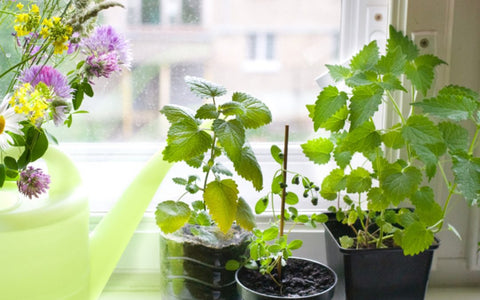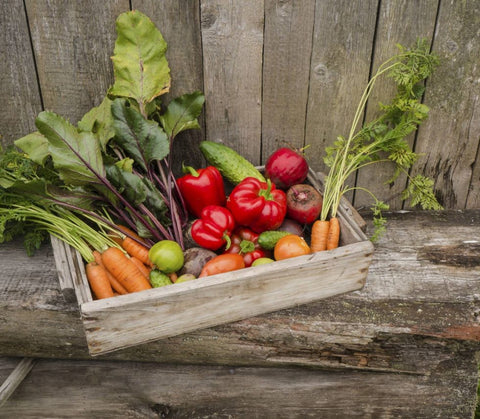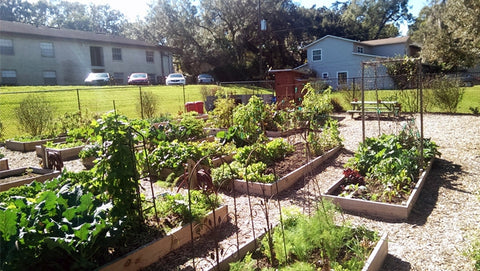Whether it’s for fresh Caprese salad, mojitos, or herbal teas – if you’re thinking about starting a home garden, there’s never been a better time to do so.
The following 5 key questions will help you determine whether you’re better off indoors or out.
Space
If quantity is a priority, you’ll almost certainly need to be planning something outdoors.
A small windowsill garden (such as the World’s Smallest Garden) will only produce enough herbs for the occasional meal garnish. Even larger and more productive indoor systems will struggle to produce more than a few meals worth of food a week.
So if you have a large family or you’re aiming for a material level of self-sufficiency, then outdoors is the better bet. This spacing guide will give you a sense of how much real estate an outdoor garden is likely to take up.
Seasonality & Climate
Different herbs and vegetables prefer different types of weather, and most will have a specific season in which they thrive. Depending on your location, the ‘season’ for some varieties can be as short as a month or two. There are plenty of free ‘gardening calendars’ available online, such as this one from Burpee, that will tell you when to plant each variety.
One of the main benefits of indoor gardening is that you can do it year-round. A comfortable indoor temperature for you is likely to work just fine for most plants. However, lighting is a key consideration—winter’s shorter days and less direct sunlight may not be enough for many plants. You may need an artificial lighting supplement.
Bottom line: if year-round availability is a priority, then indoors is the way to go.
Pests
It’s impossible to guarantee pest-free gardening regardless of location, but the risk of infestation is greatly reduced indoors—for obvious reasons. The added benefit of having a physical barrier between your plants and outdoor critters is that you’re less likely to need pesticides and sprays. While many natural and organic options are available these days, avoiding the need for them in the first place is always ideal, wouldn’t you agree?
Ambiance
Even if you don’t eat them, there are tons of benefits to living with plants—including stress reduction, improved focus, and enhanced mental health. In fact, one study found that patients recovered and left the hospital sooner when they had plants in their room. That’s a win for indoor gardening!
Convenience
Most people cook dinner in the evening, which often means it’s dark outside. Having a small herb garden on your kitchen windowsill or somewhere easily accessible indoors is far more convenient than grabbing a flashlight and heading out to the backyard to harvest your greens. Of course, we don’t want to discourage outdoor gardening, but convenience and ease of access should definitely be considered—not just for harvesting but for maintenance and watering as well.








There are no comments for this article. Be the first one to leave a message!